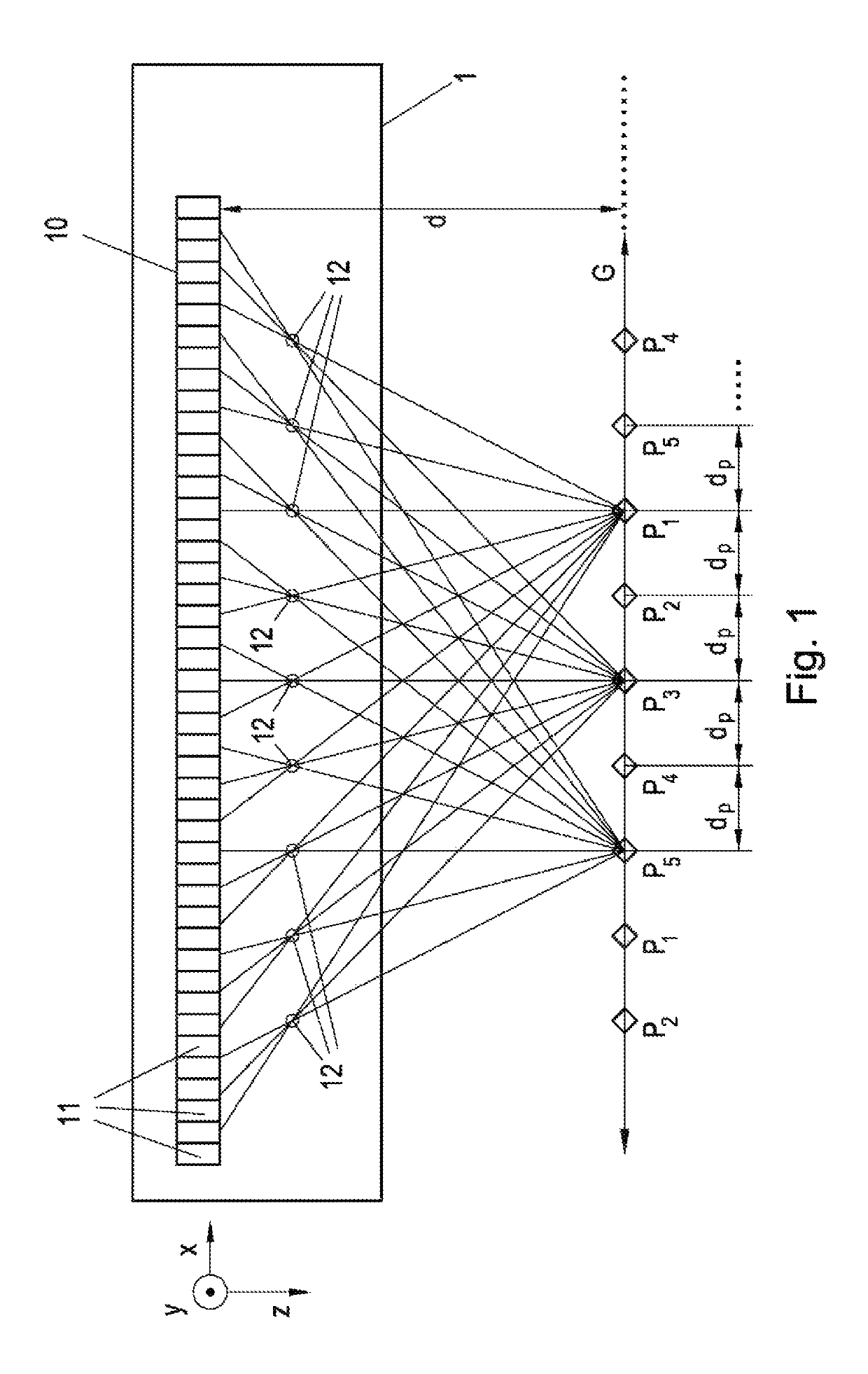Method for the representation of a three-dimensional scene on an auto-stereoscopic monitor
a three-dimensional scene and monitor technology, applied in the field of auto-stereoscopic monitors and the field of three-dimensional scene representation on auto-stereoscopic monitors, can solve the problems of barely perceptible deterioration of image quality for the human eye, and the methods are very cpu-intensive, so as to achieve the effect of saving resources and simple methods
- Summary
- Abstract
- Description
- Claims
- Application Information
AI Technical Summary
Benefits of technology
Problems solved by technology
Method used
Image
Examples
Embodiment Construction
[0017]In order to represent a stereoscopic image of a scene, a number of basic images 21, 22, 23, 24, 25 are provided which respectively show the three-dimensional scene to be displayed from different viewing angles (FIG. 2). In the present embodiment, during the creation of the basic images 21, 22, 23, 24, 25, the same scene was recorded from five recording positions respectively with the same orientation, wherein the five recording positions are arranged evenly offset from one another on a straight line normal to the image axis of the camera. The size of the basic images corresponds to the native resolution of the screen; in any case, the basic images, first of all, can be converted, in particular interpolated, to the native resolution. The native resolution is understood to be the resolution of the pixels actually present on the monitor. Alternatively, there is also the possibility that only a partial area of the screen is used for the creation of a light field. In this case, one...
PUM
 Login to View More
Login to View More Abstract
Description
Claims
Application Information
 Login to View More
Login to View More - R&D
- Intellectual Property
- Life Sciences
- Materials
- Tech Scout
- Unparalleled Data Quality
- Higher Quality Content
- 60% Fewer Hallucinations
Browse by: Latest US Patents, China's latest patents, Technical Efficacy Thesaurus, Application Domain, Technology Topic, Popular Technical Reports.
© 2025 PatSnap. All rights reserved.Legal|Privacy policy|Modern Slavery Act Transparency Statement|Sitemap|About US| Contact US: help@patsnap.com



